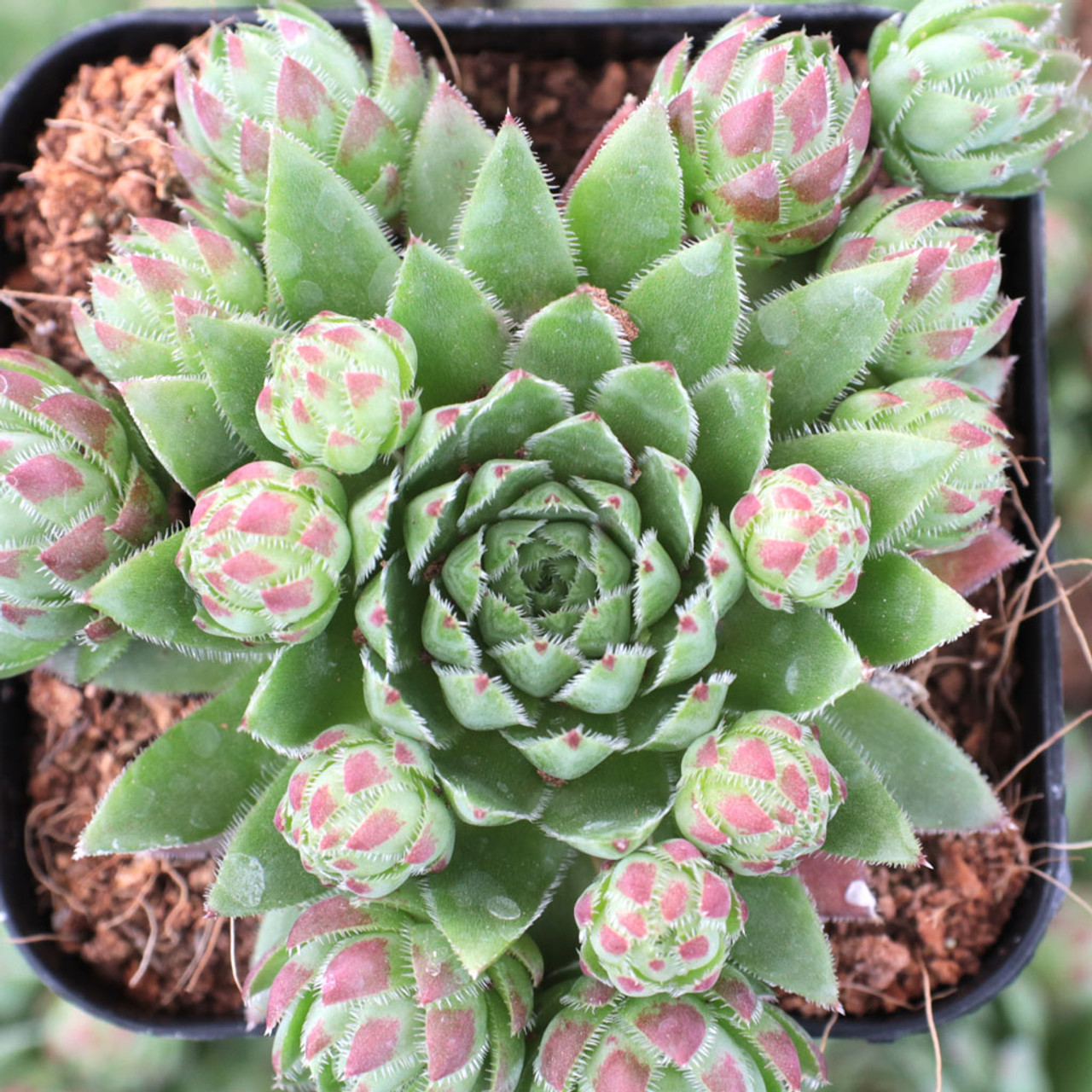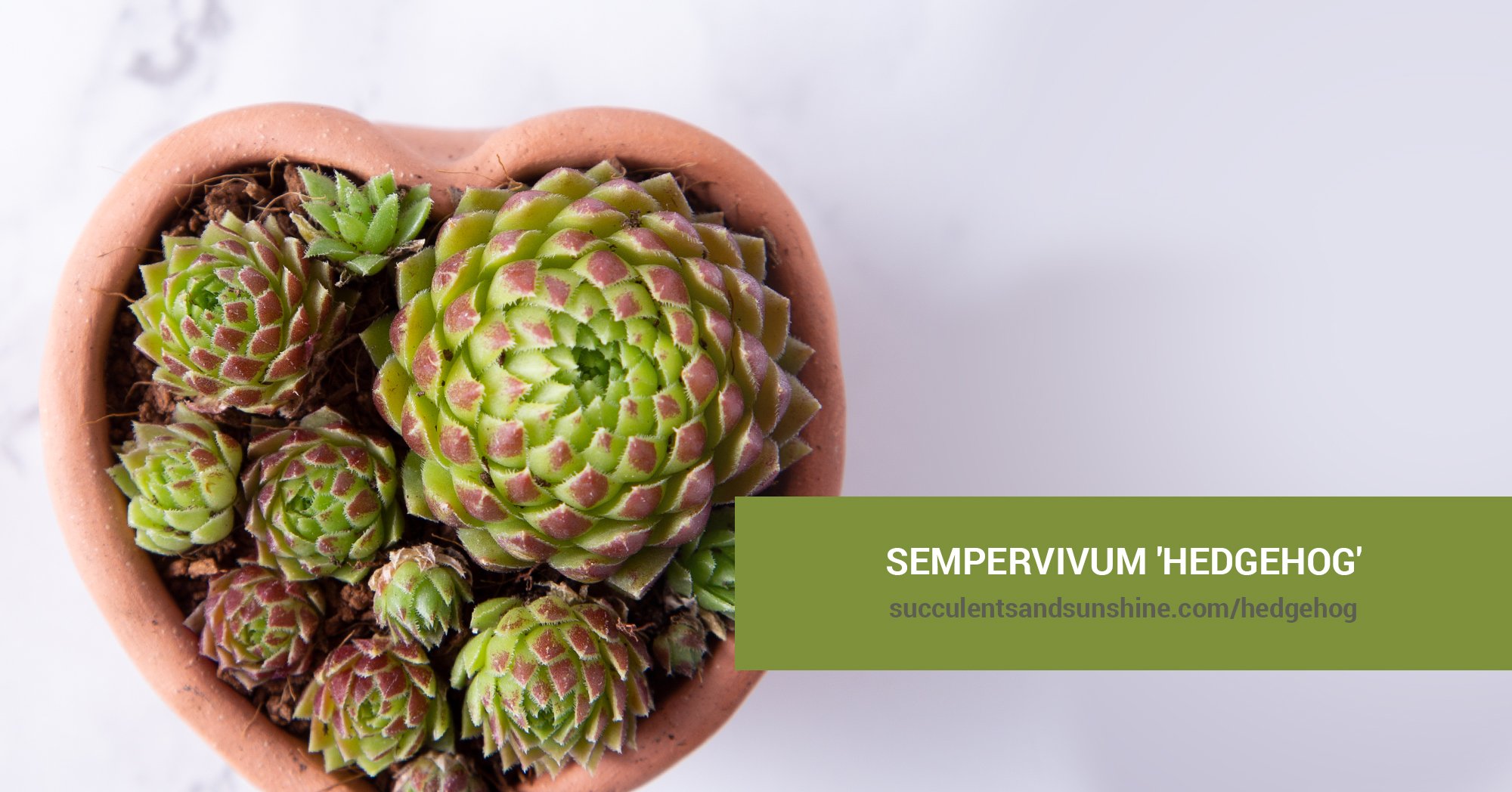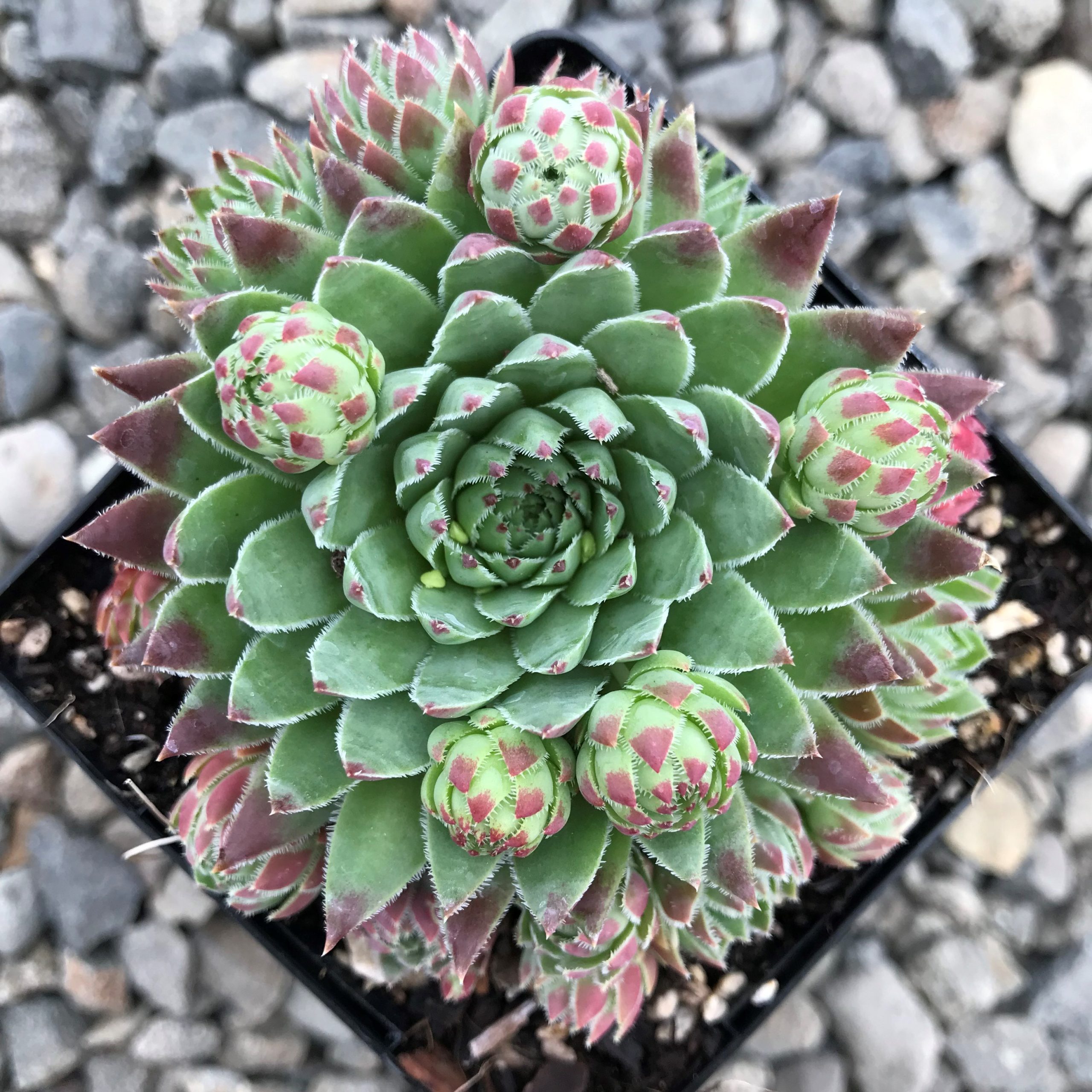This monocarpic succulent is one of the “rollers” — succulents whose “chicks” sprout from the top of the mother plant and then detach and roll away prior to taking root. Its leaves are long and sharp, with dark red and green coloring.
Table of Contents
Care and Propagation Information
This robust, one-time blooming succulent is ideal for container gardens, green roofs, and miniature gardens!
Watering
Sepmervivum ‘Hedgehog’ should be watered using the “soak and dry” technique, allowing the soil to dry out completely between each watering. This is the same watering method as other succulents and will keep the plant healthy.
Where to Plant
Hedgehogs can survive temperatures as low as -20° F (-29° C) and should be planted in an area of your garden that receives 4-6 hours of direct sunlight each day.
How to Propagate Sempervivum ‘Hedgehog’
Offsets
The hedgehog will create new plants by creating small offshoots at the top of the original. Carefully remove the offsets and leave them to dry for 24-48 hours before planting in soil that drains well.
Care and Propagation Information
General Care for Sempervivum ‘Hedgehog’
Watering
Sepmervivum ‘Hedgehog’ should be watered using the “soak and dry” technique, allowing the soil to dry out completely between each watering. This is the same watering method as other succulents and will keep the plant healthy.
Where to Plant
Hedgehogs can survive temperatures as low as -20° F (-29° C) and should be planted in an area of your garden that receives 4-6 hours of direct sunlight each day.
How to Propagate Sempervivum ‘Hedgehog’
Offsets
The hedgehog will create new plants by creating small offshoots at the top of the original. Carefully remove the offsets and leave them to dry for 24-48 hours before planting in soil that drains well.
FAQ
How many years do succulents live?
What is the longest living succulent?
The Saguaro cactus is one of the longest living succulents, with an average lifespan of 150 to 175 years. However, under favorable conditions, they can live for more than 200 years.
What to do with succulents when they get long?
Revised:
– Remove the leaves from the stem.
– Allow the leaves to dry completely.
– Repot the stem into new soil.
– Ensure the soil is moist, but not overly wet.
– Wait for the plant to start growing.
– Transplant into a larger pot if necessary.
– Check the roots every six months to see if the plant needs to be moved.
Do succulents ever stop growing?
Succulents can survive for a long period of time, and keep growing throughout their lifespan. Not all succulents grow at the same rate, with some varieties growing faster than others, leading to a bigger size.



